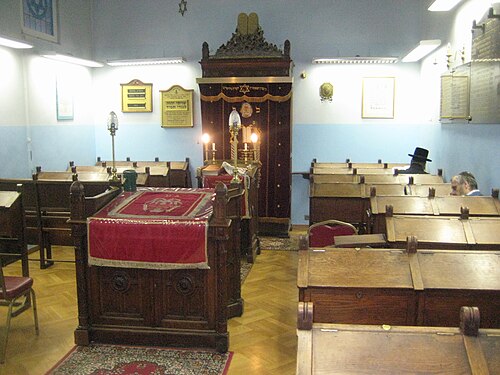| Eisenmann Synagogue | |
|---|---|
 Interior of the synagogue in 2011 | |
| Religion | |
| Affiliation | Orthodox Judaism |
| Rite | Nusach Ashkenaz |
| Ecclesiastical or organisational status | Synagogue |
| Status | Active |
| Location | |
| Location | 30 Oostenstraat, Antwerp |
| Country | Belgium |
Location of the synagogue in Belgium | |
| Geographic coordinates | 51°12′29″N4°25′29″E / 51.20806°N 4.42472°E |
| Architecture | |
| Architect(s) | Joseph De Lange |
| Type | Synagogue architecture |
| Founder | Jacob Eisenmann |
| Date established | 1905 (as a congregation) |
| Completed | 1909 |
| Materials | Brick |

The Eisenmann Synagogue is an Orthodox Jewish congregation and synagogue, located at 30 Oostenstraat, in Antwerp, Belgium. [1] Established as a congregation by Jacob Eisenmann in 1905 [2] the synagogue was completed in 1907. It is the only synagogue in Antwerp to have survived the Holocaust and the Nazi occupation of Belgium. The congregation worships in the Ashkenazi rite. [3]
